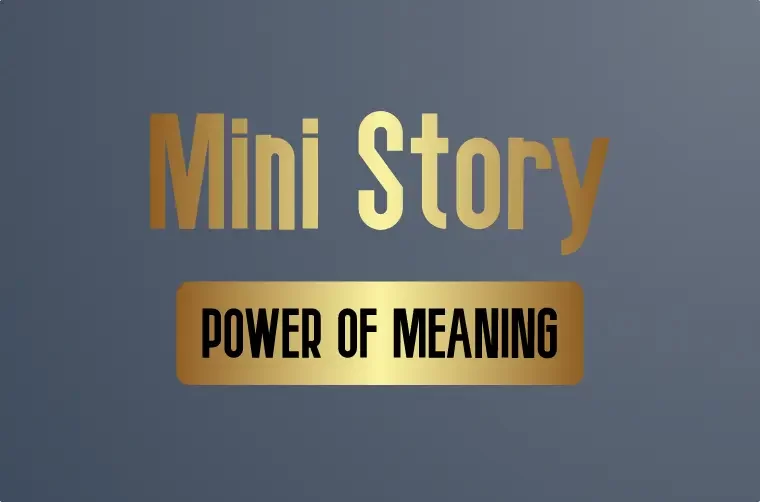Learn the basics of writing a good Mini Story. Discover the key components and techniques to write an engaging storyline with vivid imagery.
Table of Contents
Writing a Mini Story is a great way to captivate your reader’s attention and convey a powerful message in just a few words.
Whether you’re writing fiction or non-fiction, mastering the art of crafting an effective Mini Story can take your writing skills to new heights.
But how do you write a good Mini Story? What are the key elements that make up a compelling narrative in just a few sentences? In this article, we’ll explore the techniques and strategies used by successful writers to craft memorable Mini stories that leave an impact on their readers.
From choosing the right characters and setting to creating tension and conflict, we’ll cover everything you need to know to write powerful Mini stories that inspire, entertain, and inform. So let’s dive in!
What is a Mini Story?
A mini story, also known as micro-fiction or flash fiction, is a short narrative that tells a complete story with a beginning, middle, and end in just a few hundred words.
Unlike traditional stories that require pages upon pages of character development and plot twists, Mini stories focus on one key moment or idea.
The goal of a Mini Story is to leave readers with an emotional impact without relying on lengthy descriptions or detailed explanations.
To write an effective Mini Story, it’s important to choose your words carefully. Every sentence should serve a purpose and move the narrative forward.
Use sensory details such as sounds and smells to create a vivid picture in the reader’s mind. Consider using dialogue to reveal character traits and add depth to the story.
When crafting your Mini Story, remember that brevity is key. Cut out any unnecessary detail or backstory that doesn’t contribute to the overall message you want to convey.
Focus on creating tension and conflict within the confines of your limited word count.
By mastering the art of writing Mini stories, you can challenge yourself creatively while honing your skills as a storyteller.
Know your audience
Knowing your audience is key when crafting a good Mini Story. Are you writing for children or adults? What kind of language and tone will resonate with them?
Understanding your demographic will help you tailor your story to their interests and preferences, making it more engaging and relatable.
For example, if you are writing for children, consider incorporating elements of humor or adventure that will capture their imaginations. Use simple language and vivid imagery to paint a picture in their minds.
On the other hand, if you are writing for an older audience, aim for depth and complexity in your storytelling.
Use literary devices like metaphors or allusions to add layers of meaning that will appeal to their intellect.
Overall, understanding who you are writing for is essential in creating a Mini Story that connects with its readers.
Take the time to research your audience’s demographics and interests before diving into the writing process.
This way, you can craft a captivating tale that resonates with them on multiple levels.
Choose a theme
Choosing a theme is an essential component of writing a good mini-story. The theme provides the story’s framework and determines its tone. It also conveys the message that the author wants to convey to readers.
Before choosing a theme, one must first identify the purpose for writing the mini-story – this could be to entertain, educate or inspire readers.
When selecting a theme for your mini-story, it is crucial to choose something that resonates with you.
This will help you craft a story that feels authentic and sincere, which will make it easier for readers to connect with your characters and their experiences on an emotional level.
One way to brainstorm themes is by considering your personal experiences or things you’re passionate about.
Lastly, once you have chosen your theme, ensure you stay true to it throughout the story’s entirety.
A well-crafted mini-story should leave readers with a clear understanding of its central message or objective without being too preachy or heavy-handed in its approach.
Keep it simple
One essential element of writing a good Mini Story is to keep it simple. The key to a successful Mini Story is to focus on a single idea and develop it in an engaging way.
Avoid using complicated plots or too many characters that will confuse the reader. Your goal should be to tell a compelling story in as few words as possible.
Another important aspect of keeping your mini-story simple is to use clear and concise language.
Avoid using jargon, technical terms, or overly descriptive language that might distract from the plot. Instead, use plain English that your target audience can easily understand.
Finally, don’t forget about pacing when crafting your mini-story. Keep the action moving forward by avoiding lengthy descriptions or unnecessary details that might slow down the narrative flow.
Focus on creating tension and suspense in a concise manner so that readers are drawn into the story from beginning to end.
By keeping things simple, you can create a memorable mini-story that resonates with your audience long after they’ve finished reading it.
Use sensory details
To write a good Mini Story, incorporating sensory details is crucial. Sensory details engage the reader’s five senses and make the story come alive in their mind.
When describing a scene or character, use specific words that appeal to sight, sound, smell, taste, and touch.
For example, instead of simply saying “the sun was setting,” you could say “the sun painted the sky with hues of pink and orange as it slowly sank below the horizon.” This creates a vivid image in the reader’s mind that they can almost see and feel.
Similarly, when describing a character or object, use sensory language to bring it to life. Instead of stating “She wore a red dress,” try saying “Her flowing red silk dress rustled with each step she took.” This not only provides visual information but also appeals to touch through the description of the fabric’s movement.
By using sensory details in your Mini Story, you can create an immersive experience for your readers that will leave them wanting more.
Leave room for interpretation
One key element to writing a good Mini Story is to leave room for interpretation. This means that the story should not be overly descriptive or explicit, and there should be some ambiguity in the plot or characters.
By leaving room for interpretation, readers are able to engage more with the story and bring their own experiences and perspectives into the narrative.
Another benefit of leaving room for interpretation is that it can make the story more memorable and impactful.
When readers are forced to fill in gaps or draw their own conclusions, they become more invested in the story and are more likely to remember it long after they have finished reading.
Additionally, leaving room for interpretation can add depth and complexity to the narrative, making it more interesting and engaging.
However, it’s important not to take this concept too far – if a story is too ambiguous or confusing, readers may lose interest or become frustrated.
It’s all about finding a balance between providing enough information to hook readers while also allowing them space to interpret and engage with the story on their own terms.

Conclusion: Practice and experiment
In conclusion, the best way to improve your mini-story writing skills is through practice and experimentation.
Writing is a skill that requires constant honing, and the only way to get better at it is by doing it regularly. Set aside time each day to write a Mini Story or two, even if it’s just for fun.
Don’t be afraid to experiment with different styles and genres of mini-stories. You never know what you might discover about your own writing style when you step out of your comfort zone.
Try writing from different points of view, using different tenses, or experimenting with dialogue.
Lastly, don’t forget to read widely! Reading not only exposes you to different styles of storytelling, but it also helps you develop an instinctive sense of what works and what doesn’t in a narrative.
With enough practice and experimentation – and a willingness to learn from both successes and failures – anyone can become a skilled mini-story writer.










